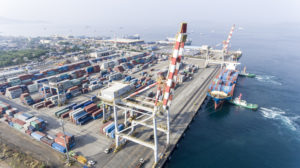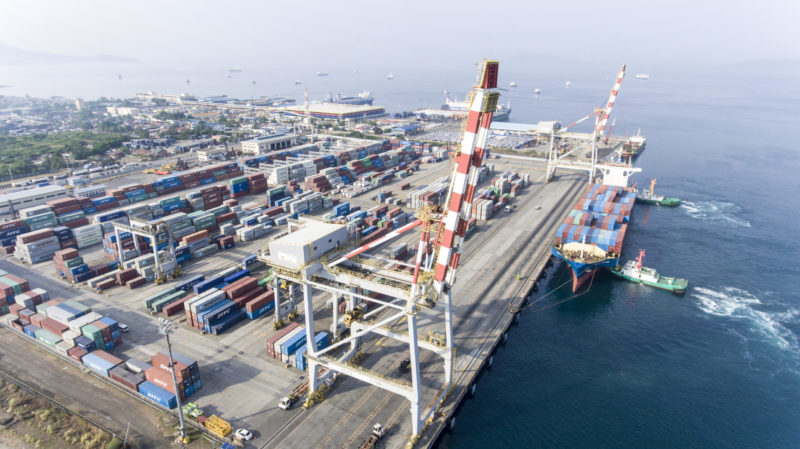
Port operator Asian Terminals Inc. (ATI) reported a 46.3% decline in net income to P1.15 billion in the first half of 2020 from P2.14 billion in the same period last year.
ATI in a statement said results in the first half of the year fell amid the economic contraction triggered by the coronavirus disease (COVID-19).
However, it said it has noted signs of trade recovery going into the second quarter.
Revenues for the first six months of the year reached P5.05 billion, down 28.2% from P7.04 billion year-on-year on account of lower container volumes, ATI reported in a regulatory disclosure.
From January to June, Manila South Harbor handled nearly 460,000 twenty-foot equivalent units (TEU) of international boxes, and Batangas Container Terminal more than 113,000 TEUs.
Both ports declined by an identical 29% compared to the same period last year as global and regional markets continued to reel from the impact of COVID-19.
The Philippines suffered its deepest contraction on record during the second quarter of 2020–GDP sank 16.5%—as the country imposed one of Asia’s strictest lockdowns against the coronavirus, resulting in restricted movements and weaker consumption.
But the port operator has also observed signs of trade recovery, with its consolidated volume breaching the 100,000-TEU mark in June, representing a 22% volume increase from the month prior.
The uptrend was sustained in July with volume hitting nearly 117,000 TEUs, for a 16% month-on-month growth.
ATI executive vice president William Khoury said the company is undertaking prudent cost management, conducting day-to-day operations anchored on safety and efficiency, and continuing its investment in important port infrastructure projects to “enable us to remain resilient amid these challenging times.”
“Through these initiatives, we will sustain the steady flow of trade and ensure the safe passage of people and cargoes through our gateway ports, serving as our contribution to stimulating the Philippine economy,” Khoury added.





